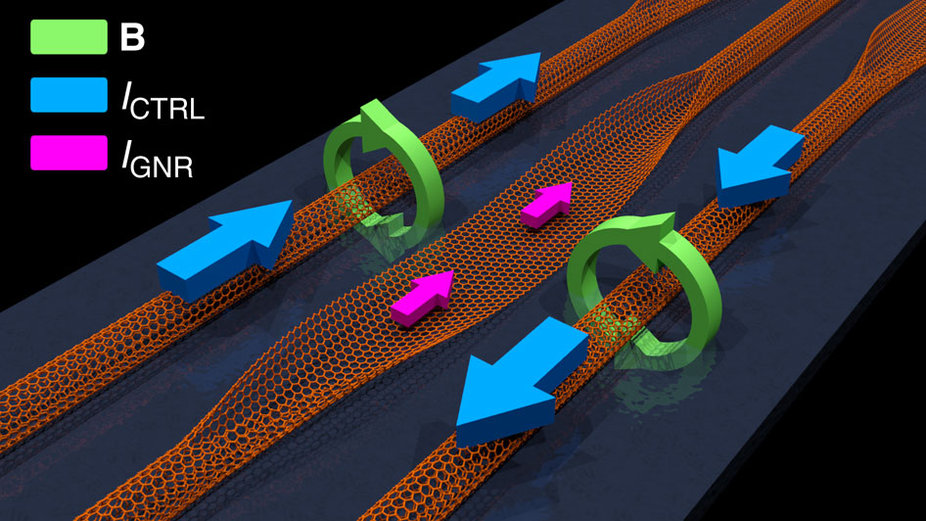
20th June 2017 Graphene transistors could mean computers that are 1,000 times faster Next-gen, carbon-based transistors would far outperform today's silicon versions, according to a new research paper from the University of Central Florida (UCF).
Traditional silicon-based transistors revolutionised electronics with their ability to switch current on and off. By controlling the flow of current, the creation of smaller computers and other devices was possible. Over the decades, rapid gains in miniaturisation led to computers shrinking from room-sized monoliths, to wardrobe-sized, to desktops and laptops and eventually handheld smartphones – a phenomenon known as Moore's Law. In recent years, however, concerns have arisen that the rate of progress may have slowed, or could even be approaching a fundamental limit. A solution may be on the horizon. This month, researchers have theorised a next-generation transistor based not on silicon but on a ribbon of graphene, a two-dimensional carbon material with the thickness of a single atom. Their findings – reported in Nature Communications – could have big implications for electronics, computing speeds and big data in the future. Graphene-based transistors may someday lead to computers that are 1,000 times faster and use a hundredth of today's power. "If you want to continue to push technology forward, we need faster computers to be able to run bigger and better simulations for climate science, for space exploration, for Wall Street. To get there, we can't rely on silicon transistors anymore," said Ryan M. Gelfand, director of the NanoBioPhotonics Laboratory at UCF.
His team found that by applying a magnetic field to a graphene ribbon, they could change the resistance of current flowing through it. For this device, the magnetic field was controlled by increasing or decreasing the current through adjacent carbon nanotubes. The strength of the magnetic field matched the flow of current through this new kind of transistor, much like a valve controlling the flow of water through a pipe. Transistors act as on and off switches. A series of transistors in different arrangements act as logic gates, allowing microprocessors to solve complex arithmetic and logic problems. But clock speeds that rely on silicon transistors have been relatively stagnant for over a decade now, and are mostly still stuck in the 3 to 4 gigahertz range. A cascading series of graphene transistor-based logic circuits could produce a massive jump, explains Gelfland, with clock speeds approaching the terahertz range – 1,000 times faster – because communication between each of the graphene nanoribbons would occur via electromagnetic waves, instead of the physical movement of electrons. They would also be smaller and far more efficient, allowing device-makers to shrink technology and squeeze in more functionality. "The concept brings together an assortment of existing nanoscale technologies and combines them in a new way," said Dr. Joseph Friedman, assistant professor of electrical and computer engineering at UT Dallas, who collaborated with Gelfland and his team. While the concept is still in the early stages, Friedman said work towards a prototype all-carbon, cascaded spintronic computing system will continue in the NanoSpinCompute research laboratory. ---
Comments »
|








